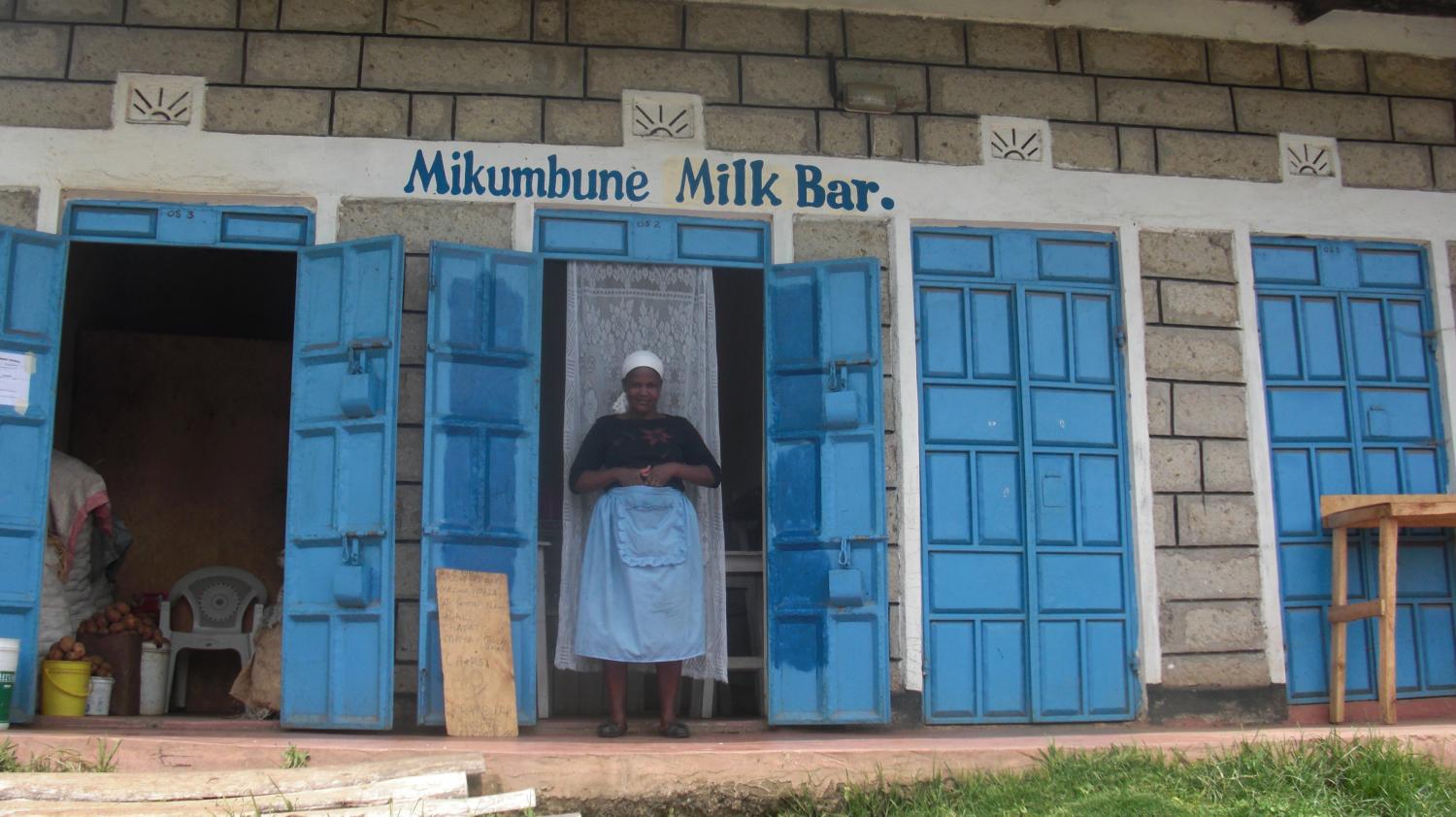Home • Microfinance • Article
Ever thought about investing in a milk bar?
June 26, 2014
It’s 3pm, heading to the office, after back to back meetings since early morning with mostly dairy farmers. We've been talking to Kiva borrowers, for borrower verification, hours away from the main business districts in the green region of Nkubu in Kenya. Now we're waiting with the loan officer for a boda boda (moto taxi) to drive us on the bumpy roads before jumping into a matatu (microbus) to our final destination, looking for some shade and freshness away from the sun and suffocating heat.
This is when we notice the blue and white house, with its “Milk Bar” handwritten letters and a thin lace-like curtain as a door, moving gracefully as air breezes. Welcomed by Florence’s smile, the dynamic owner and unique employee, we rest in this immaculate cute place, sitting on high chairs like in a regular bar, sipping a glass of fresh milk or mala (a salty version) in beer glass, savoring French toasts, cooked in front of us.
 Welcome to Florence's Milk Bar
Welcome to Florence's Milk BarMartin, the loan officer, smiles. This may be new to me, a “mzungu” (foreigner), but not for him. He is used to those tiny places, mushrooming across the country. According to Florence, it was a natural expansion, she loved the concept, working in other milk bars before and ventured on her own 2 years ago, selling from mornings till dawn to customers of all age surplus of her own cow and three other friends’ cows. She sells about 13 liters a day and side bites (toasts, cakes, chapatti), eggs produced by her own chickens with a net profit on average of 150 USD a month. She does acknowledge though that being limited in the milk production she cannot address all the demand.
So when I met Priscilla in Kericho, a client of Juhudi Kilimo who contracted a Kiva loan to build a shed for her dairy cows to increase their productivity to run a milk bar within the next 3 years, it made perfect sense to me! With the shed, she expects her four cows to feel more relaxed, move less, produce more (25 liters a day versus 15 currently). Once finished with this loan, she intends to buy a more productive cow (20 liters a day), increase her savings to run her own “milk bar” in the nearby town, selling milk, eggs from her chickens, serving omelets with the tomatoes, potatoes that she grows on her field.
So next time you’re thinking about investing in a dairy cow in Kenya, down the road, you may invite your friends over the next milk bar!
PREVIOUS ARTICLE
Brazil’s Banco Pérola Aiming at High GOOOALS with Kiva →NEXT ARTICLE
Kiva-Powered Education in Uganda →













